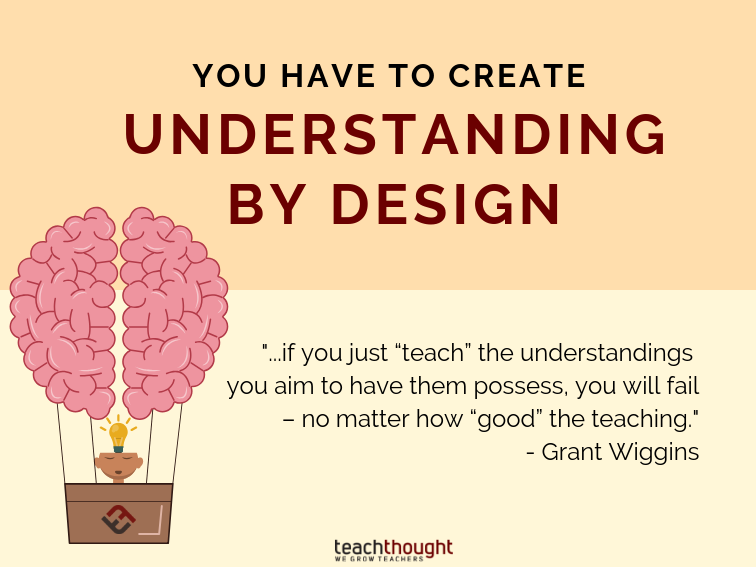
How To Create Understanding By Design
Ed note: On May 26, 2015, Grant Wiggins passed away. Grant was tremendously influential on TeachThought’s approach to education, and we were lucky enough for him to contribute his content to our site. Occasionally, we are going to go back and re-share his most memorable posts. This is one of those posts. Thankfully his company, Authentic Education, is carrying on and extending the work that Grant developed.
by Grant Wiggins, Ed.D, Authentic Education
A cardinal principle in aiming at understanding is that understanding requires different pedagogy than acquisition of knowledge and skill. Knowledge and skills are best developed by direct instruction and reinforcement if we want recall and fluency.
Understanding, however, involves something beyond mere acquisition for later straightforward use. To understand, students must do something with, adapt, and sometimes question what they (think they) know.
They have to think and rethink.
They must be required to draw inferences and come to realizations, try performing with that understanding, and draw further inferences from what works, what doesn’t, when, and why. The student doesn’t have to merely “know” F=ma or that the Federalists predicted the health-care debate, they have to “realize” the point of the knowledge, its power, and its limits in order to transfer it flexibly and fluently in the future.
Thus, to achieve understanding as an educator, you have to help students “by design” come to realizations that they own and appreciate as insightful. If you don’t, if you just “teach” the understandings you aim to have them possess, you will fail – no matter how “good” the teaching. Indeed, this is the key to grasping the meaning of research on student misconception: misunderstandings persist in the face of pedagogy that doesn’t elicit and challenge student meanings and their meaning-making process. Teachers thus need to be crystal-clear in their own mind which of their goals involve knowledge and which involve understanding and treat each goal accordingly.
The temptation to teach understandings is great. It is arguably the Achilles Heel of all teachers. Indeed, we are prone to “teach” too much as our title – Teacher, Professor – indicates. We are convinced that we can effectively teach this or that understanding so that they grasp and appreciate it. Furthermore, we are in constant fear of losing time and not getting through all the content to be covered. So, we think direct teaching of understanding is both efficient and effective.
Alas, it almost never works in the end. If you doubt me, just switch gears and think of parenting. How often have you had a child “learn” the understanding you “taught” the first or even the fourth time about, say, peer pressure, time management or wise use of allowance money? I didn’t think so. Indeed, a little reflection on the humility and patience required by parenting would be a useful antidote to the naiveté of thinking you can “cover” all that matters in your courses and cause lasting and useful understanding.
No, there is no way around it. If you want students to have meaningful learning experiences that culminate in transferable insight and know-how, then you have to lose time to gain it. You have to slow down the teaching to speed up the learning.
You have to engineer understanding by design.
In part 2, we’ll take a look at why this is so important.
You Have To Create Understanding By Design
